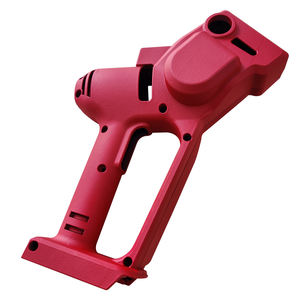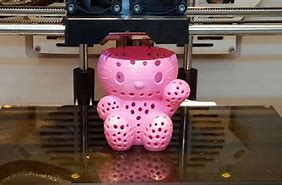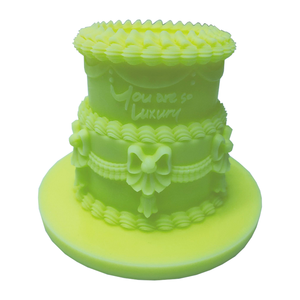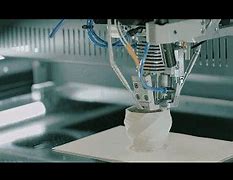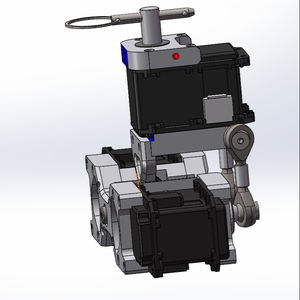Discover a professional 3D printing powder supplier
(The Effect of Ultrasonic Vibration on the Microstructure and Properties of Laser Cladding In718 Powder)
Laser cladding has obvious advantages in forming, preparing coatings and
repairing metal parts. However, what follows is that the internal defects in its
microstructure and poor mechanical properties need to be further studied. A
research institute uses ultrasonic-assisted processing for laser cladding to
improve the performance of cladding parts.
Based on the role of ultrasonic sonication and cavitation effects on the
metal solidification process, the vibration parameters are used to study the
degree of subcooling and inoculation rate of the molten pool metal. The
experimental results confirmed that after the application of ultrasonic, the
grain size is significantly smaller than that obtained when only laser cladding
is used.
When the ultrasonic vibration amplitude is 25 μm, the grain size can be
refined 0.522 times that of no vibration. The structure and chemical composition
of the precipitated phase have been significantly changed. In addition, the
effect of high-frequency vibration on the mechanical properties of the cladding
layer was also analyzed through comparative experiments. The results show that
the application of high-frequency vibration can effectively reduce the pores,
and at the same time improve the microhardness and friction properties of the
parts. Quantitatively speaking, the friction coefficient is 0.628 when
ultrasonic vibration is used and the amplitude is 25 μm, and it is 0.709 when
there is no ultrasonic vibration.
Laser cladding technology, often used as a direct energy deposition
technology, has recently become a relatively active research field in the world
because of its preparation, repair and strengthening capabilities. Among
different laser cladding, laser cladding of nickel-based superalloys, such as
impeller blades in aero engines, is a particularly attractive research area.
Nickel-based superalloys are widely used in the preparation of turbine blades,
turbine discs and combustion chambers of aircraft engines. This is because of
the high-temperature strength, fatigue properties, oxidation resistance and heat
corrosion resistance of the alloy.
However, the laser cladding of nickel-based superalloys also faces huge
challenges because of the uneven microstructure and high porosity in the alloy.
In order to overcome this challenge, in recent years, ultrasonic vibration
technology has been introduced as an auxiliary technology for laser cladding of
nickel-based alloys, which can improve its internal microstructure and
mechanical properties (micro-hardness and friction properties). ) And reduce the
defects formed during the deposition process.
In the process of ultrasonic-assisted laser cladding, the sound pressure
changes periodically with the application of ultrasonic waves. Based on the
changes in sound pressure, the degree of subcooling and the incubation rate
increase with the increase in the amplitude and frequency of ultrasonic
vibration. Compared with laser cladding without ultrasonic vibration, the
columnar crystals are mainly concentrated at the bottom of the cladding layer.
The middle and top of the cladding layer become equiaxed crystals with the
application of ultrasonic waves. As the vibration amplitude increases, the grain
size is significantly refined, and the number and composition of Laves phases
(Nb and Mo) decrease.
In addition, due to the refinement of the crystal grains, the microhardness
is improved, and the number of Laves phases and pores decrease with the
application of ultrasonic waves. When the ultrasonic vibration amplitude is
25μm, the microhardness reaches the maximum value of 215HV. In addition, the
microhardness on the top of the coating is greater than that on the bottom. The
main reason is that the columnar crystals are mainly concentrated at the bottom,
while the middle and top are mainly equiaxed crystals. As for the heat-affected
zone, it can be found that the microhardness gradually increases with the
increase of the vibration amplitude. However, the influence of laser power and
scanning speed on microstructure, microhardness and heat-affected zone is very
insignificant.
As for the friction performance, when the ultrasonic vibration amplitude is
25 μm, the friction coefficient is the smallest, which is 0.628 times that of no
ultrasonic vibration. It is 0.709 times of traditional craftsmanship. This means
that the coefficient of friction can be reduced by introducing ultrasonic
vibration. In addition, the depth of friction is also the smallest when the
vibration amplitude is 25 μm, which also reflects that the surface friction
damage of the sample is the smallest.
About 3dprintingpassion:
3dprintingpassion is a trusted global chemical material supplier & manufacturer with
over 12 years experience in providing super high-quality chemicals and
Nanomaterials. The company export to many countries, such as USA, Canada,
Europe, UAE, South Africa, Tanzania,
Kenya,Egypt,Nigeria,Cameroon,Uganda,Turkey,Mexico,Azerbaijan,Belgium,Cyprus,Czech
Republic,Brazil, Chile, Argentina, Dubai, Japan, Korea, Vietnam, Thailand,
Malaysia, Indonesia, Australia,Germany, France, Italy, Portugal etc. As a
leading nanotechnology development manufacturer, 3dprintingpassion dominates the market.
Our professional work team provides perfect solutions to help improve the
efficiency of various industries, create value, and easily cope with various
challenges. If you are looking for In718 Powder, please send an email to:
sales2@nanotrun.com
(The Effect of Ultrasonic Vibration on the Microstructure and Properties of Laser Cladding In718 Powder)

